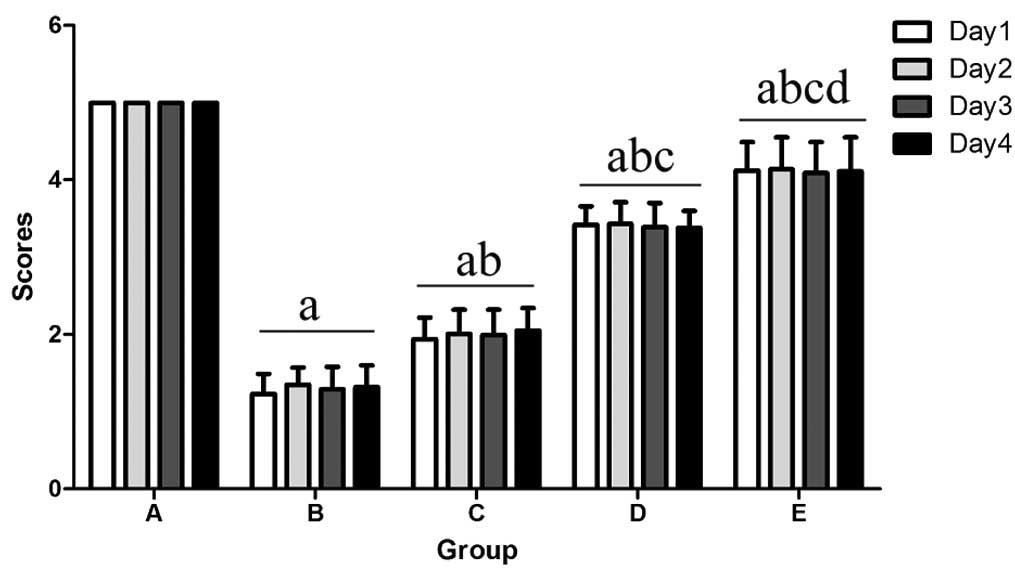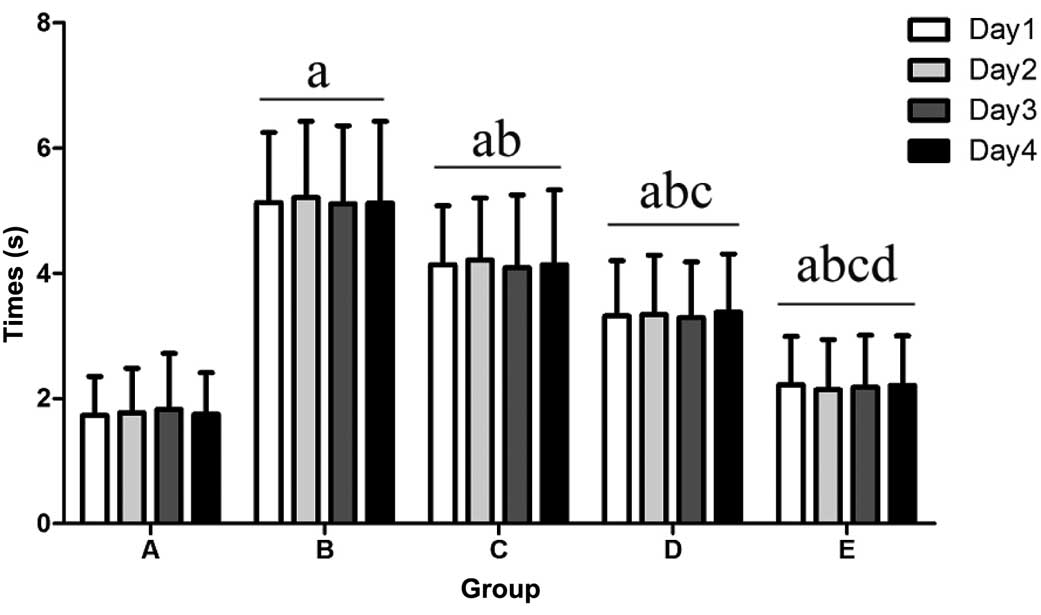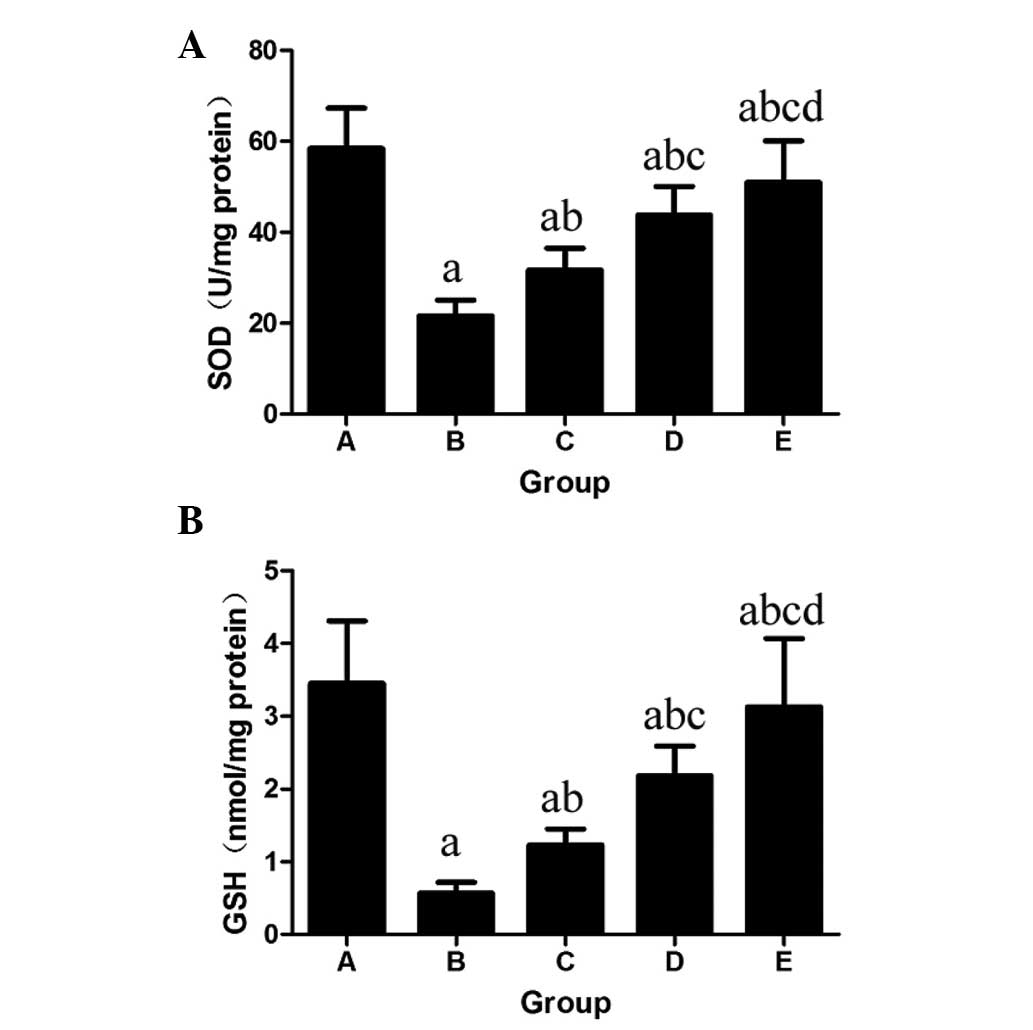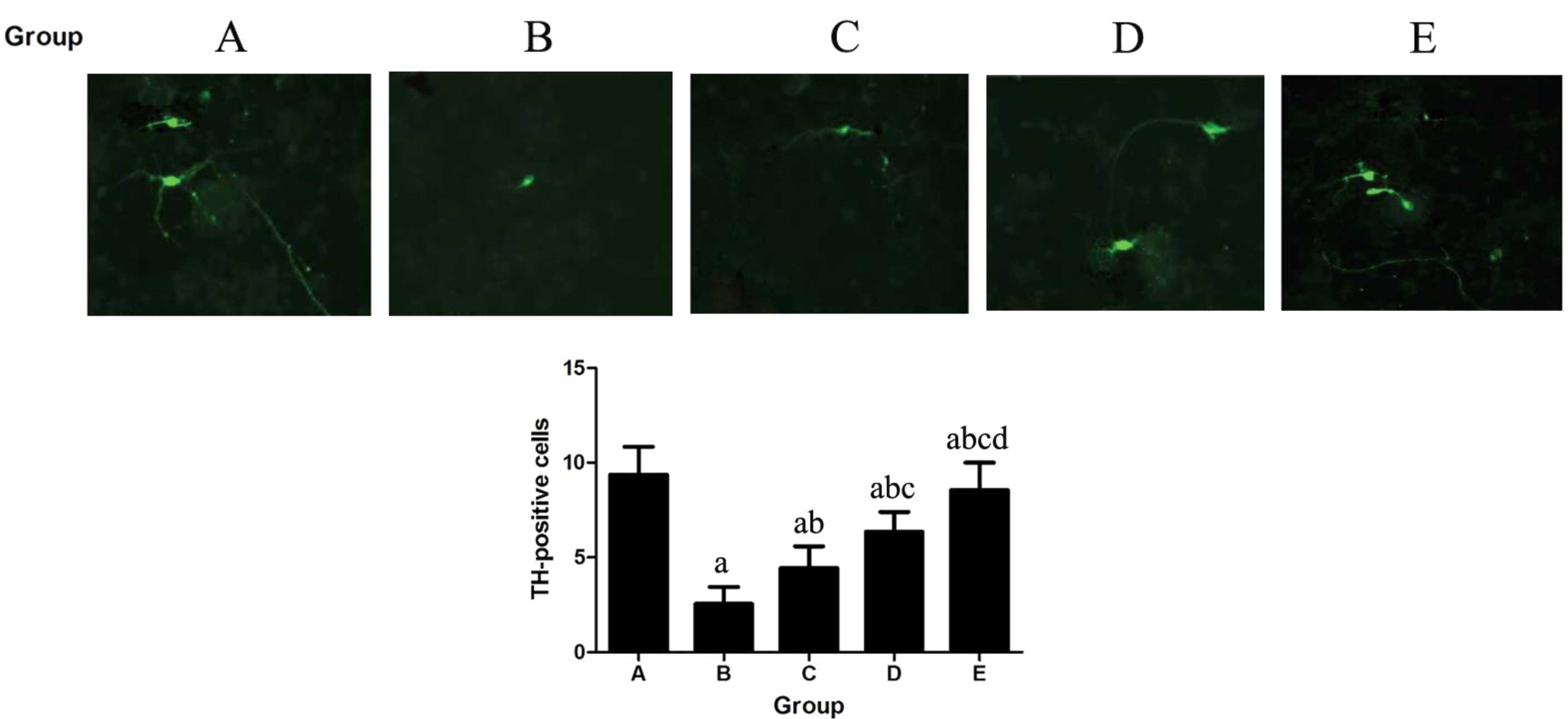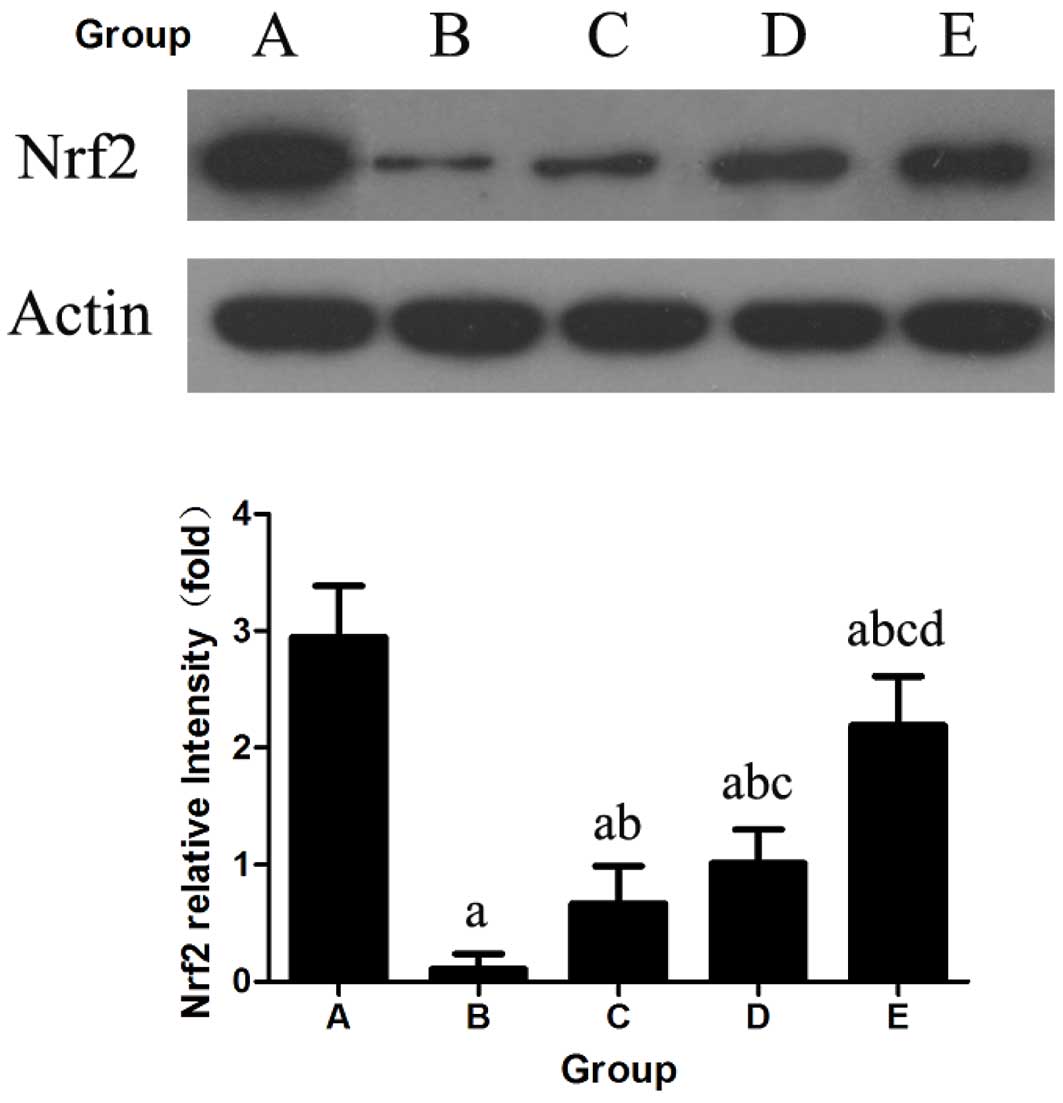|
1
|
Barnham KJ, Masters CL and Bush AI:
Neurodegenerative diseases and oxidative stress. Nat Rev Drug
Discov. 3:205–214. 2004. View
Article : Google Scholar : PubMed/NCBI
|
|
2
|
Wood JM and Gupta S: Vitamin D and
neurocognitive disorder due to Alzheimer's disease: A review of the
literature. Ann Clin Psychiatry. 27:e1–e7. 2015.PubMed/NCBI
|
|
3
|
Sargolzaei S, Sargolzaei A, Cabrerizo M,
Chen G, Goryawala M, Noei S, Zhou Q, Duara R, Barker W and Adjouadi
M: A practical guideline for intracranial volume estimation in
patients with Alzheimer's disease. BMC Bioinformatics. 16:(Suppl
7). S82015. View Article : Google Scholar
|
|
4
|
Zhang C, Hu WH, Wu L, Zhang K and Zhang
JG: Behavioral effects of deep brain stimulation of the anterior
nucleus of thalamus, entorhinal cortex and fornix in a rat model of
Alzheimer's disease. Chin Med J (Engl). 128:1190–1195. 2015.
View Article : Google Scholar : PubMed/NCBI
|
|
5
|
Lara H Herman, Alanís-Garza EJ, Puente MF
Estrada, Mureyko LL, DA Alarcón Torres and Ixtepan Turrent L:
Nutritional approaches to modulate oxidative stress that induce
Alzheimer's disease. Nutritional approaches to prevent Alzheimer's
disease. Gac Med Mex. 151:245–251. 2015.(In Spanish). PubMed/NCBI
|
|
6
|
Langston JW and Irwin I: MPTP: Current
concepts and controversies. Clin Neuropharmacol. 9:485–507. 1986.
View Article : Google Scholar
|
|
7
|
Alcaraz-Zubeldia M, Rojas P, Boll C and
Rios C: Neuroprotective effect of acute and chronic administration
of copper (II) sulfate against MPP+ neurotoxicity in mice.
Neurochem Res. 26:59–64. 2001. View Article : Google Scholar : PubMed/NCBI
|
|
8
|
Yacoubian TA and Standaert DG: Targets for
neuroprotection in Parkinson's disease. Biochim Biophys Acta.
1792:676–687. 2009. View Article : Google Scholar : PubMed/NCBI
|
|
9
|
Samii A, Etminan M, Wiens MO and Jafari S:
NSAID use and the risk of Parkinson's disease: Systematic review
and meta-analysis of observational studies. Drugs Aging.
26:769–779. 2009. View Article : Google Scholar : PubMed/NCBI
|
|
10
|
Li Y, Wang B, Zhou C and Bi Y: Matrine
induces apoptosis in angiotensin II-stimulated hyperplasia of
cardiac fibroblasts: Effects on Bcl-2/Bax expression and caspase-3
activation. Basic Clin Pharmacol Toxicol. 101:1–8. 2007. View Article : Google Scholar
|
|
11
|
Long Y, Lin XT, Zeng KL and Zhang L:
Efficacy of intramuscular matrine in the treatment of chronic
hepatitis B. Hepatobiliary Pancreat Dis Int. 3:69–72.
2004.PubMed/NCBI
|
|
12
|
Haiyan W, Yuxiang L, Linglu D, Tingting X,
Yinju H, Hongyan L, Lin M, Yuanxu J, Yanrong W and Jianqiang Y:
Antinociceptive effects of matrine on neuropathic pain induced by
chronic constriction injury. Pharm Biol. 51:844–850. 2013.
View Article : Google Scholar : PubMed/NCBI
|
|
13
|
Li X, Zhou R, Zheng P, Yan L, Wu Y, Xiao X
and Dai G: Cardioprotective effect of matrine on
isoproterenol-induced cardiotoxicity in rats. J Pharm Pharmacol.
62:514–520. 2010. View Article : Google Scholar : PubMed/NCBI
|
|
14
|
Li Y, Zhang J, Ma H, Chen X, Liu T, Jiao
Z, He W, Wang F, Liu X and Zeng X: Protective role of autophagy in
matrine-induced gastric cancer cell death. Int J Oncol.
42:1417–1426. 2013.PubMed/NCBI
|
|
15
|
Guo L, Xue TY, Xu W and Gao JZ: Effects of
matrine on the proliferation and apoptosis of human
rhabdomyosarcoma RD cells. Zhongguo Dang Dai Er Ke Za Zhi.
14:780–784. 2012.(In Chinese). PubMed/NCBI
|
|
16
|
Haga R, Sugimoto K, Nishijima H, Miki Y,
Suzuki C, Wakabayashi K, Baba M, Yagihashi S and Tomiyama M:
Clinical utility of skin biopsy in differentiating between
Parkinson's disease and multiple system atrophy. Parkinsons Dis.
2015:1670382015.PubMed/NCBI
|
|
17
|
Akbar U, He Y, Dai Y, Hack N, Malaty I,
McFarland NR, Hess C, Schmidt P, Wu S and Okun MS: Weight loss and
impact on quality of life in Parkinson's disease. PLoS One.
10:e01245412015. View Article : Google Scholar : PubMed/NCBI
|
|
18
|
Liu HG, Zhang K, Yang AC and Zhang JG:
Deep brain stimulation of the subthalamic and pedunculopontine
nucleus in a patient with Parkinson's disease. J Korean Neurosurg
Soc. 57:303–306. 2015. View Article : Google Scholar : PubMed/NCBI
|
|
19
|
Sun WH, Liu F, Chen, Y and Zhu YC:
Hydrogen sulfide decreases the levels of ROS by inhibiting
mitochondrial complex IV and increasing SOD activities in
cardiomyocytes under ischemia/reperfusion. Biochem Biophys Res
Commun. 421:164–169. 2012. View Article : Google Scholar : PubMed/NCBI
|
|
20
|
Bo Young Chung, So Ra Choi, Ik Jun Moon,
et al: The glutathione derivative, GSH monoethyl ester, may
effectively whiten skin but GSH does not. Int J Mol Sci.
17:E6292016. View Article : Google Scholar : PubMed/NCBI
|
|
21
|
Zhang HF, Shi LJ, Song GY, Cai ZG, Wang C
and An RJ: Protective effects of matrine against progression of
high-fructose diet-induced steatohepatitis by enhancing antioxidant
and anti-inflammatory defences involving Nrf2 translocation. Food
Chem Toxicol. 55:70–77. 2013. View Article : Google Scholar : PubMed/NCBI
|
|
22
|
Abdul-Aziz A, MacEwan DJ, Bowles KM and
Rushworth SA: Oxidative stress responses and NRF2 in human
leukaemia. Oxid Med Cell Longev. 2015:4546592015.PubMed/NCBI
|
|
23
|
Fu J, Zheng H, Wang H, Yang B, Zhao R, Lu
C, Liu Z, Hou Y, Xu Y, Zhang Q, et al: Protective role of nuclear
factor E2-related factor 2 against acute oxidative stress-induced
pancreatic β-cell damage. Oxid Med Cell Longev.
2015:6391912015.PubMed/NCBI
|















